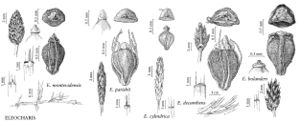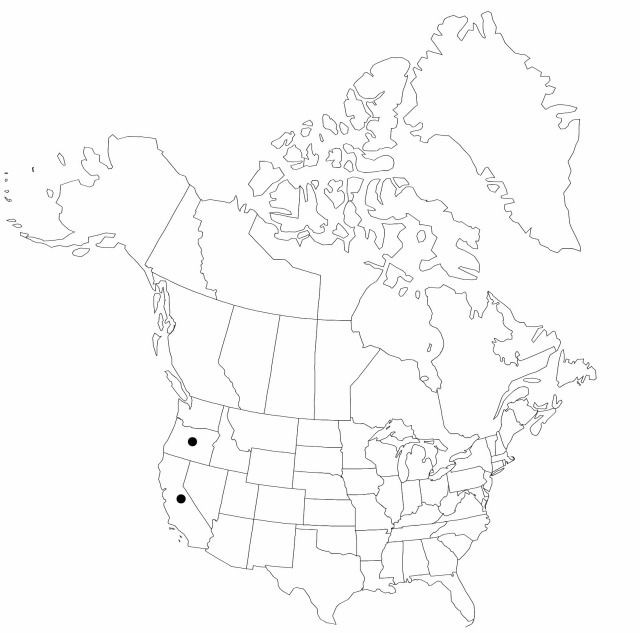Eleocharis decumbens
Bull. Misc. Inform., addit. ser. 8: 23. 1908.
Plants perennial, densely tufted; rhizomes often hidden by culms and roots, fairly long, 3–4 mm thick, hard, cortex persistent, longer internodes from very short to 5 mm, scales usually clearly evident, disintegrating to fibers, 20–25 mm, papery. Culms terete, often with 10–18 blunt ridges when dry, 10–50 cm × 0.3–2 mm, firm to rigid, spongy. Leaves: distal leaf-sheaths persistent, not splitting, proximally brown or reddish, distally stramineous, brown, reddish or green, often inflated, papery, apex mostly dark redbrown, subtruncate to obtuse, often callose, tooth absent. Spikelets ovoid, 3–8 × 2–2.5 mm, apex acute; proximal scale amplexicaulous, entire; subproximal scale empty or with flower; floral scales appressed in fruit, 10–20, 3 per mm of rachilla, orangebrown, midrib regions often greenish, ovate, 3–3.5 × 1.5 mm, apex entire, acute, often carinate in distal part of spikelet. Flowers: perianth bristles 6, stramineous, stout, nearly equal, mostly equaling or exceeding tubercle, (0.5–) 1–2.2 mm, prominently retrorsely spinulose; stamens 3 (?); anthers dark yellow to stramineous, 1.2–1.5; styles 3-fid. Achenes falling with scales, dark-brown, obpyriform, nearly eqilaterally to greatly compressedtrigonous, angles slightly prominent, 1–1.3 × 0.75–0.9 mm, neck absent or short, finely rugulose at 20X with more than 20 horizontal ridges in vertical series, or reticulate or cancellate at 20–30X. Tubercles well developed, whitish, pyramidal, as high as wide to much lower than wide, 0.2–0.6 × 0.4–0.7 mm.
Phenology: Fruiting summer–fall.
Habitat: Wet fresh meadows, seeps, and lakeshores, in interior montane conifer forests and alpine zones
Elevation: 700–3500 m
Discussion
Eleocharis decumbens is known only from Shasta and Tulare counties in California.
Although Eleocharis decumbens has long been ignored or treated as a variety of E. montevidensis, it clearly is a very distinct species, from which it differs especially in its thick rhizomes with fibrous scales and its acute floral scales.
Specimens of Eleocharis decumbens without rhizomes or achenes are easily confused with the apparently closely related E. bolanderi, which often may be distinguished by culms no more than 0.5 mm wide and spikelets with scales no more than 3 mm long. The tubercles of E. decumbens are usually well differentiated from the achenes and about as high as wide; the tubercles of E. bolanderi are often poorly developed and much lower than wide. Three collections from Jackson and Klamath counties in Oregon, lack achenes but are probably E. decumbens.
Selected References
None.
Lower Taxa
"shortened" is not a number.

